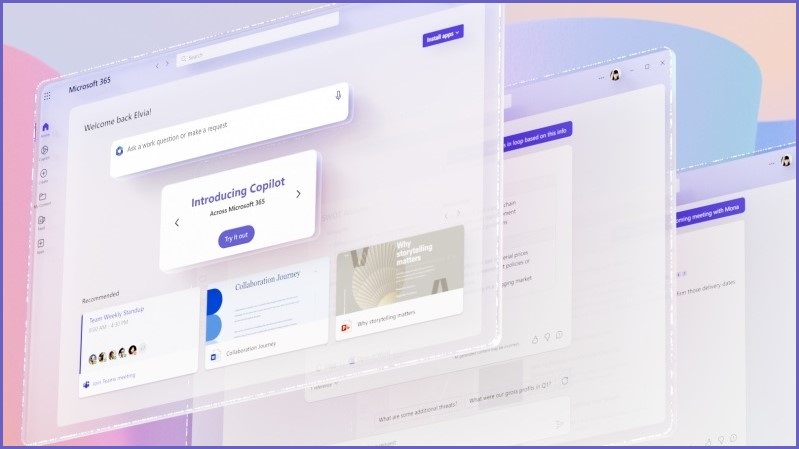Microsoft is integrating AI into its Office software suite in order to let users create documents, presentations, and analyse data using natural language prompts.
The announcement happened just days after Google’s said it would put generative AI into Docs and Gmail.
“Today marks the next major step in the evolution of how we interact with computing, which will fundamentally change the way we work and unlock a new wave of productivity growth,” said Microsoft CEO Satya Nadella.
“With our new Copilot for work, we’re giving people more agency and making technology more accessible through the most universal interface – natural language.”
Microsoft has explained the Copilot System as the confluence of three utilities: the Microsoft 365 apps many organisations use day-to-day, the Microsoft Graph (content like Word documents and emails), and OpenAI’s large language model GPT-4.
When you prompt Copilot, it goes through a pre-processing phase Microsoft has called “grounding” which involves finding specific context from your links and documents.
The system then modifies the original prompt and sends it out to the language model which gives the detailed response.
In a way, this use-case is a better demonstration of large language models’ power than searching the web because its smaller scope allows less room for error or ‘hallucinations’.
Jared Sparato, Microsoft VP of Business Applications, described Copilot as “enterprise-ready” and a “new era of computing that will fundamentally transform the way we work”.
Copilot will be powered by GPT-4, the new model from OpenAI publicly released last month.
Microsoft has a deal with OpenAI to re-sell its products through the Azure public cloud as a result of the company’s multi-billion dollar investment into OpenAI, which began life as a non-profit foundation.
A report in the Information last week said Microsoft is struggling to scale up its AI cloud infrastructure in the wake of OpenAI’s burst of popularity.
Take the work out of work
In a demo, Microsoft showed how users could use Copilot to draft a product announcement based on a spec sheet, give a summary of notes ahead of a meeting, analyse data in a spreadsheet, create PowerPoint presentations from a document, and draft emails to colleagues.
It shows Copilot as an integrated feature that uplifts Microsoft Office from being a suite of static software used largely by humans to a more automated set of connected applications.
Sumit Chauhan, VP of the Office Product Group, described how Copilot still makes mistakes, mentioning in a presentation that there is still a need to tidy up elements of new AI-generated documents, and add personal touches.
“Throughout the writing process, I’m always in control,” she said while showing how Copilot can author a personal speech.
Nadella framed this as a “conscious design choice to put human agency both at a premium and at the centre of the product” in order to highlight the need to responsibly develop AI.
“Fundamentally AI must evolve in alignment with social, cultural, and legal norms in a democratic society,” he said.
Microsoft reportedly laid off one of its responsible AI teams as part of the recent job cuts affecting 10,000 workers.
Copilot is also the name of the AI assistant that Microsoft-owned code platform Github released last year.
A customer survey found most Copilot users reported feeling more productive because they were completing tasks quicker, spending less time searching the internet for help, and were wasting less effort on repetitive coding tasks.
Microsoft has also revealed it will let people use 3D avatars in Teams calls later this year.










